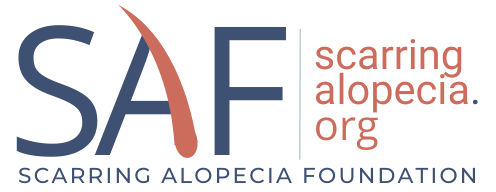Rethinking Hair Loss Treatment: How a Diabetes Drug Measures Up to a Topical Corticosteroid for Lichen Planopilaris
Article Summary by Michael Buontempo, MS4 | MD Candidate | Hackensack Meridian School of Medicine
Lichen Planopilaris (LPP) is a type of hair loss that causes scarring, driven by inflammation of hair follicles, mainly lymphocytes (a type of white blood cell). Currently, one of the first line treatments for LPP involves high-potent topical corticosteroids, which is not always effective. Pioglitazone, a diabetes medication, has emerged as a potential treatment for LPP due to its anti-inflammatory effects.
This article titled, “Efficacy and safety of oral pioglitazone in the management of lichen planopilaris in comparison with clobetasol: A randomized clinical trial,” by Lajevardi et al. reports the results of a Randomized Controlled Trial (RCT), which compared the effectiveness and safety of pioglitazone to a common topical corticosteroid, clobetasol, in treating LPP (1).
Treatment success was primarily measured using the Lichen Planopilaris Activity Index (LPPAI) score. Both pioglitazone and clobetasol significantly lowered LPPAI scores, indicating improvement, with no major difference between them. However, the symptom relief varied between groups:
· Patients treated with clobetasol mostly saw reduced redness of the scalp and skin around hair follicles.
· Pioglitazone-treated patients mostly experienced relief from itching and scaling.
· By the end of the 6-month study, about half of patients in both groups showed partial improvement, though the rates varied slightly.
Both treatments were generally safe and well-tolerated by patients, with minor and temporary side effects. Notably, the known serious side effects of pioglitazone, like weight gain and fluid retention, were not observed in this study.
Previous research on pioglitazone for LPP has been mixed, partly due to small study sizes and different research designs. Some past studies reported positive effects (2), while others found limited benefit.
Based on this RCT, pioglitazone appears to be a safe and effective alternative to clobetasol for treating LPP. However, it wasn’t necessarily better than clobetasol. Pioglitazone might be a useful option for patients who find daily topical applications of clobetasol hard to manage or for those who experience skin thinning with prolonged clobetasol use. Because pioglitazone is a diabetes drug, it could also be a preferred option for LPP patients who also have diabetes.
Considering the unique benefits of each drug (clobetasol for reducing redness, pioglitazone for reducing itchiness and scaling), combining these two treatments might offer more comprehensive relief for patients.
This study concluded that pioglitazone is as safe and effective as clobetasol for treating LPP as a first-line therapy. Patients in both groups were generally satisfied with their treatment.
Thus, pioglitazone stands as a viable alternative treatment for LPP, particularly for those with limited forms of the disease.
Read full article here.
References:
1. Aa, V. L, Ghiasi M, et al. Efficacy and safety of oral pioglitazone in the management of lichen planopilaris in comparison with clobetasol: A randomized clinical trial. Dermatologic therapy. 2022;35(11).
2. M. K, Klein EJ, Brinster N, et al. Reversible hair loss in a patient with cicatricial alopecia: A case of regrowth associated with pioglitazone use. JAAD case reports. 2022;28.
